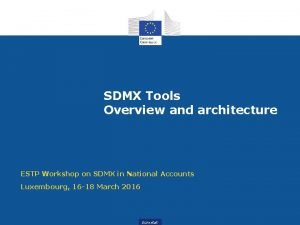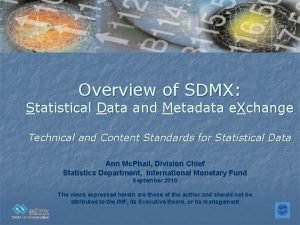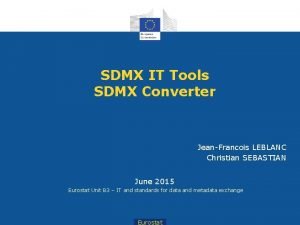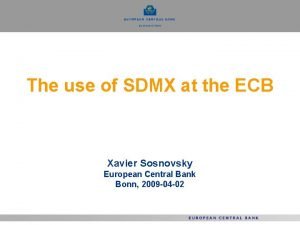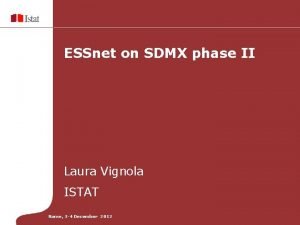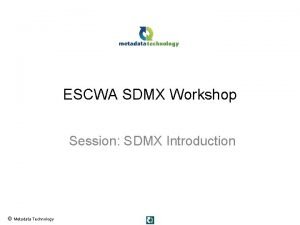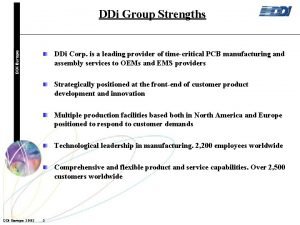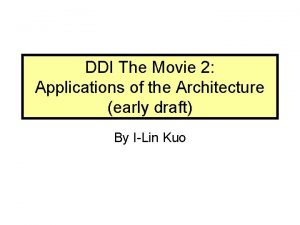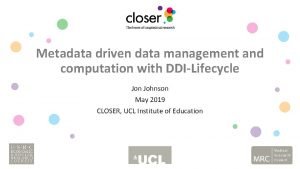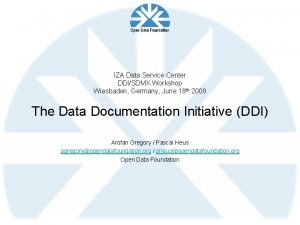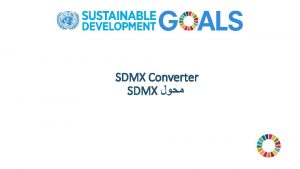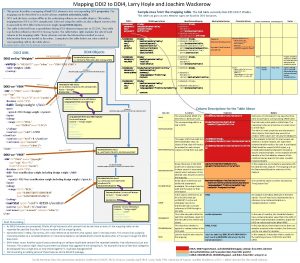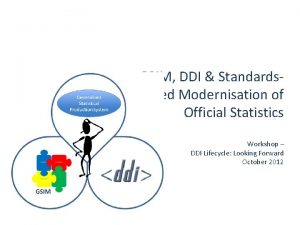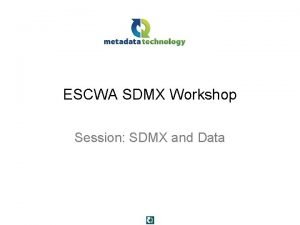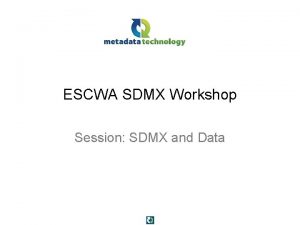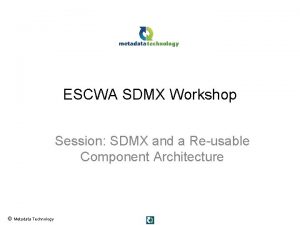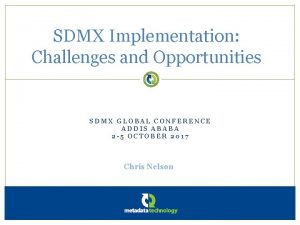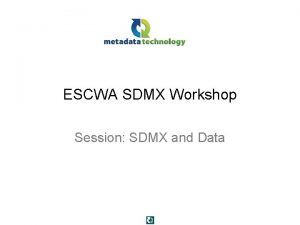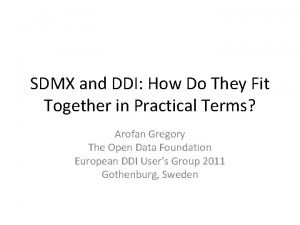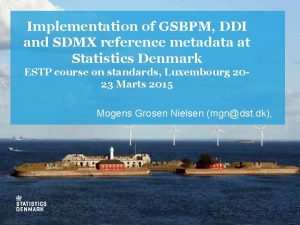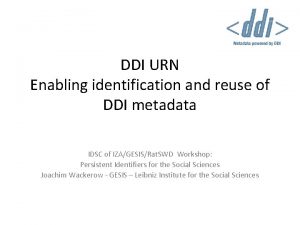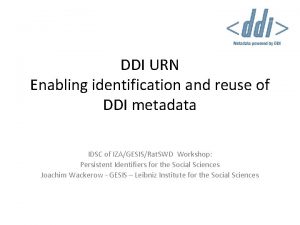GSIM Mapping to SDMX and DDI Preliminary Findings
















- Slides: 16

GSIM Mapping to SDMX and DDI: Preliminary Findings and Status Arofan Gregory Chris Nelson Metadata Technology Eurostat, June 4/5, 2013 Luxembourg

Outline • • • Working process Goals Mapping Gaps At-a-Glance Business Group Concepts Group Production Group Structures Group Direct mapping between DDI and SDMX Conclusions

Working Process • Group includes representatives from NSIs, international organizations, central banks, and standards bodies – Includes active implementers • Meets bi-weekly via conference calls • Split into two groups – GSIM-DDI and GSIM SDMX • Significant cross-membership to ease coordination

Goals • GSIM 1. 0 had some initial mappings against various standards (incl. DDI and SDMX) – This is the basis of the current work • Will produce a mapping table from GSIM to DDI, GSIM to SDMX • Locate gaps for each standard, provide feedback to standards bodies • Find any gaps in the GSIM model itself • Support the GSIM “plug & play” cases

Design Principles • Support from one standard is enough – Both DDI and SDMX do not need to support everything • No “forced” mappings – If strong semantics don’t exist, identify as a gap

Standards-Mapping Gaps At-A-Glance • Some quick statistics on the current state of the mappings*: – Crimson means a gap – Green means a strong map – Orange means a possible map, either through qualification or further investigation • Note that not all gaps need to be filled – Some are covered by other standards – Some don’t require support from SDMX or DDI * Slides courtesy of Therese Lalor, UN/ECE, presented at METIS, May 2013

SDMX 34 6 93

DDI 42 52 39

DDI 3. 2 29 77 27

Data Collection Specify needs Processes Activity and Design Classifications Unit Data Structures Dimensional Data Structures Dissemination Variables Population and Units

Business Group • Statistical Activity and Design – Not well-supported by DDI, but support should be better in future versions – SDMX has a very generic process model • Data collection area is well-supported by DDI, little or no coverage from SDMX • Specification of needs – DDI is weak, documentary not machine-actionable – Requirements will be passed to the DDI Alliance – Could use SDMX Reference Metadata to support this, but no explicit support

Concepts Group • Major gap: classification management • Otherwise, good support from DDI • Reasonable support from SDMX but no distinction between codes and categories • Populations, statistical units not well supported • We expect strong alignment with future versions of DDI (some changes already to DDI 3. 2 in public review)

Production Group • Not good “actionable” metadata in SDMX or DDI • Gaps here are not critical – Other standards support this better • BPMN • BPEL • We expect better support from DDI in future – DDI 3. 2 offers some better support than 3. 2 • SDMX has a process model, but not as much detail

Structures Group • The best coverage for GSIM is in this part of the model – Data sets – Data structures • This is the key metadata from the standards perspective – Also for many implementations • Dissemination better described by SDMX than by DDI – We do not expect DDI to support this function

Direct Mapping between DDI and SDMX • GSIM provides a framework for understanding how the implementation standards (DDI and SDMX) can be aligned to provide coverage for different aspects of statistical production • This does not remove the need for direct transformations (“mappings”) between the standards in some cases • The typical example is where a microdata set described using DDI is tabulated, producing a DDI Ncube – for reporting and dissemination purposes, this can be directly transformed into an SDMX data set (with corresponding structural metadata)

Conclusions • Fair coverage by standards in some areas • Identified gaps will, where necessary, result in requirements being passed to the standards organizations • Further work is needed to complete the mapping/analysis • GSIM will provide a good model for convergence of standards in future
 Sdmx excel
Sdmx excel Http://sdmx.store:8080
Http://sdmx.store:8080 Sdmx converter
Sdmx converter Website localization statistics
Website localization statistics Laura vignola
Laura vignola Sdmx converter
Sdmx converter The associative mapping is costlier than direct mapping.
The associative mapping is costlier than direct mapping. Forward mapping vs backward mapping
Forward mapping vs backward mapping Prinsip analisis dan desain
Prinsip analisis dan desain Ddi heat exchangers
Ddi heat exchangers Ddi corp
Ddi corp Movie ddi.to
Movie ddi.to Leap 360 interim assessment answer key
Leap 360 interim assessment answer key Ddi assessments
Ddi assessments Cupom cambial sujo
Cupom cambial sujo Api driven ddi
Api driven ddi Ddi
Ddi
